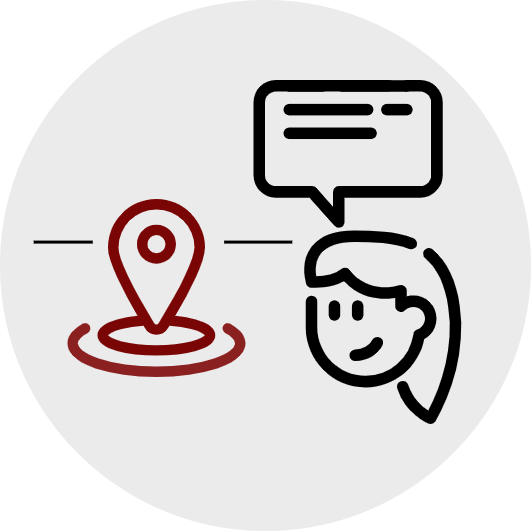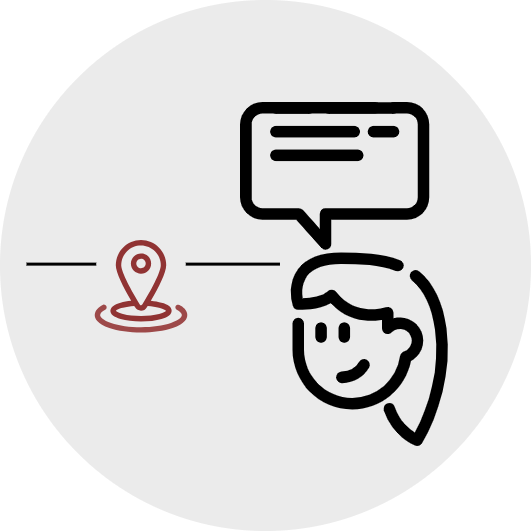In conversation, you’ll eventually need to give commands or instructions in Pennsylvania Dutch. What should you remember about verbs when giving commands?
Giving commands to one person in Pennsylvania Dutch
 When you give commands in Pennsylvania Dutch to one person, the first verb is conjugated to ich (I) — even though ich is not used in the sentence.
When you give commands in Pennsylvania Dutch to one person, the first verb is conjugated to ich (I) — even though ich is not used in the sentence.
Since the word ich doesn’t appear in the sentence, you could imagine yourself saying, “I am telling you…”
Examples
Kawl mich shpaydah. (Call me later.)
Mach shuah di deah zu gmacht is. (Make sure the door is closed.)
Kumm rei. (Come in.)
Gebb uns en kawl. (Give us a call.)
Vann du vitt, shreib en note un shikk ’s zu uns. (If you want, write a note and send it to us.)
In each of the examples above, notice how the first verb is conjugated to ich (I).
You’ll notice in the last example, shreib (write) and shikk (send) are not at the start of the sentence. But they are at the start of a new thought.
Giving commands to more than one person in Pennsylvania Dutch
 When you give commands to more than one person in Pennsylvania Dutch, things are slightly different. Instead of conjugating the first verb for ich (I), you conjugate the first verb to diah (you plural) when giving commands to a group.
When you give commands to more than one person in Pennsylvania Dutch, things are slightly different. Instead of conjugating the first verb for ich (I), you conjugate the first verb to diah (you plural) when giving commands to a group.
Just as with giving commands to one person, diah does not appear in the sentence, but it’s implied since the verb starts the sentence.
Examples
Shtobbet sell! ((you all) Stop that!)
Veiset leevi un respekt zu anri. ((you all) Show love and respect to others.)
Gukket an’s piktah. ((you all) Look at the picture.)
Gevvet nett uf! ((you all) Don’t give up!)
Shpaydah, gevvet uns en kawl. (Later, (you all) give us a call.)
Again, in each of the examples above, notice how the first verb is conjugated to diah (you plural).
And once again (see last example), the command is usually at the start of a sentence, but not always. Just make sure it’s at the start of the new thought.
Bonus Tip: Compound Words Get Split
You may also notice that some compound words get split apart when used in commands or instruction in Pennsylvania Dutch.
For example:
- oh’halda (continue) becomes Hald oh / Haldet oh
- abheicha (listen) becomes Heich ab / Heichet ab
This isn’t a full list, but just something to be on the lookout for.

